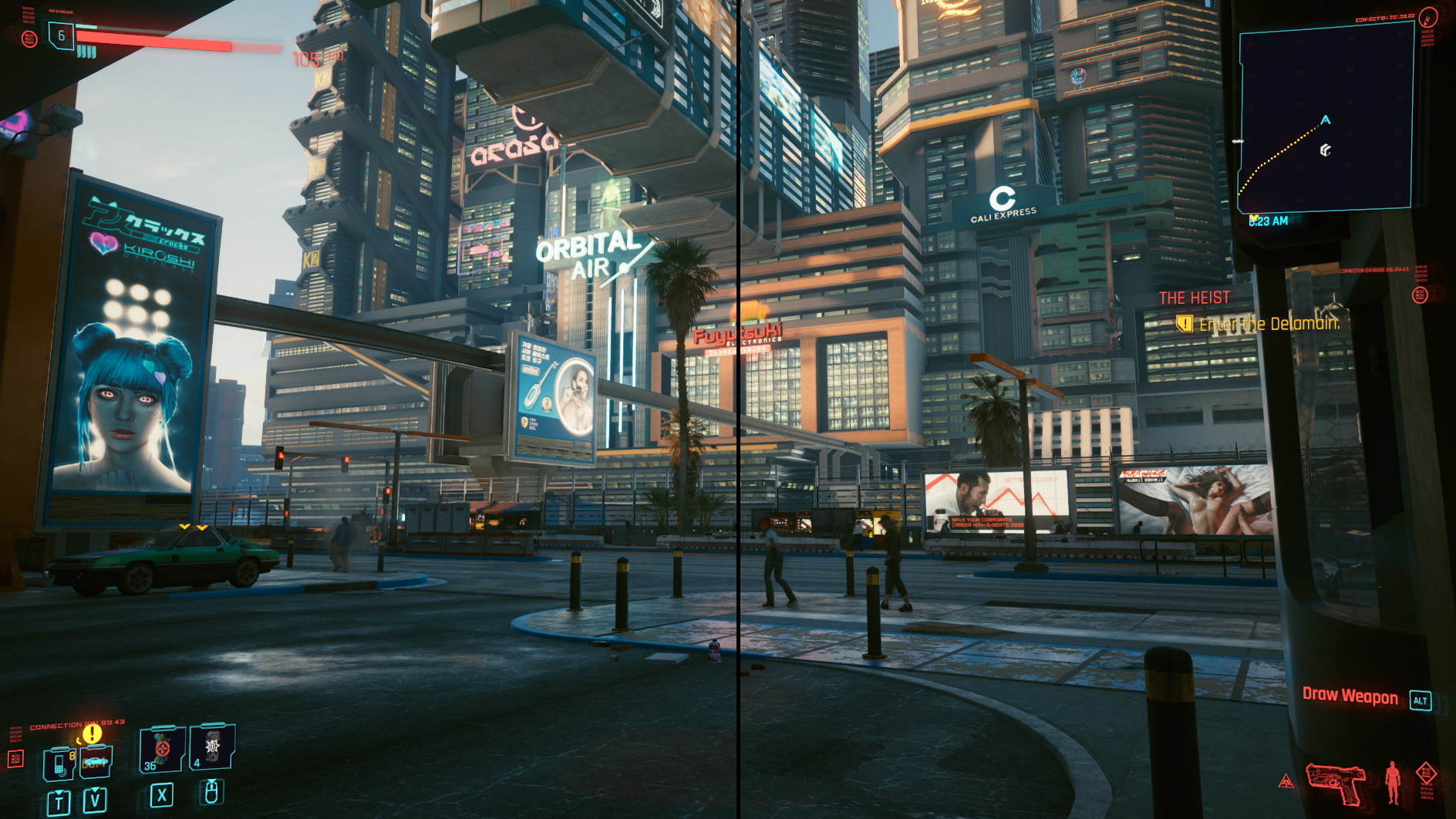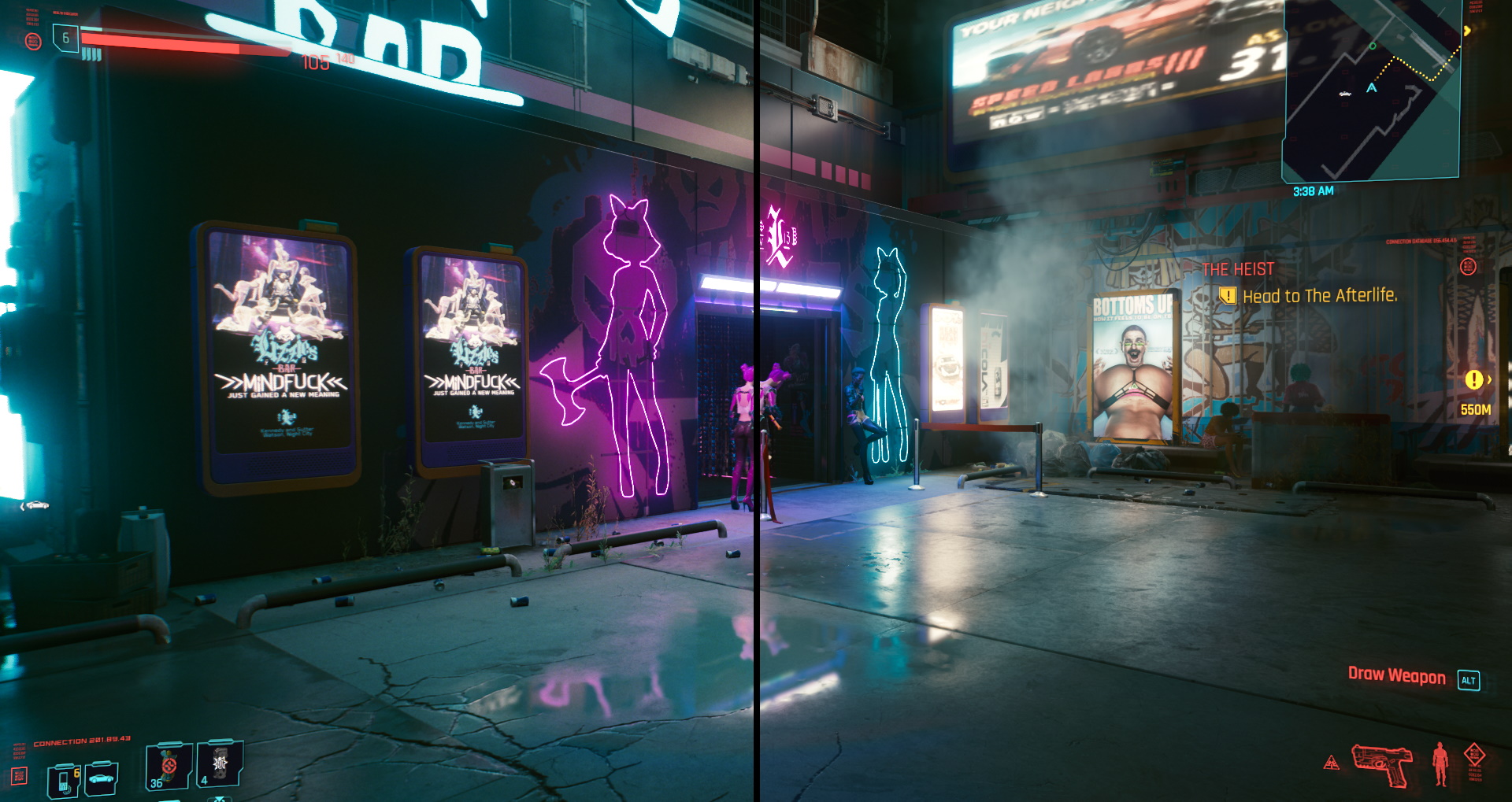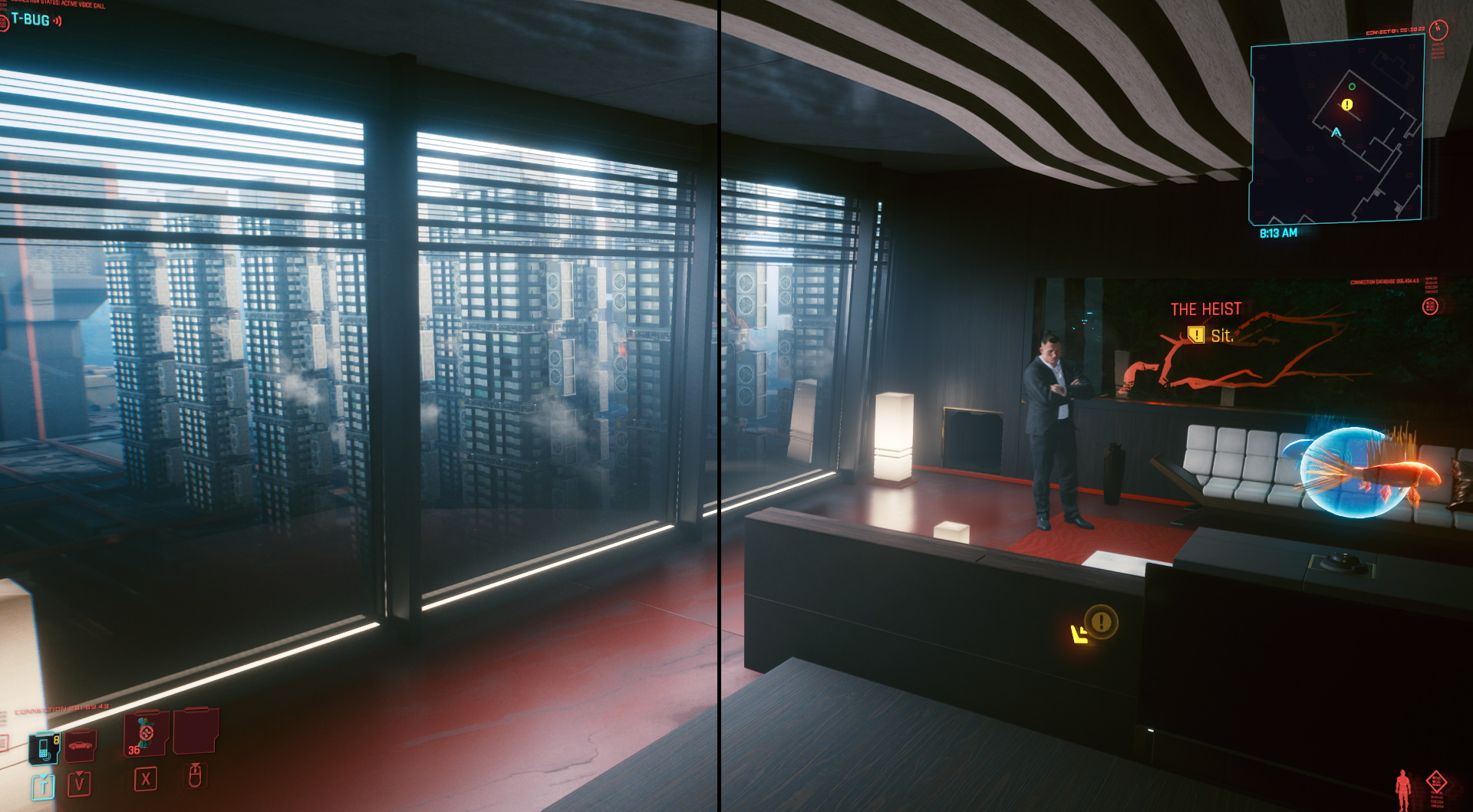Cyberpunk 2077 has a hidden Cinematic RTX mode
The changes it makes aren't exactly obvious, but you might spot a few.

Cyberpunk 2077 may throw up a few glitches from time to time, but it's hard to deny that it's a pretty game. Especially if you've got the hardware to turn those ray tracing pretties on. An enterprising user, andwhat112 over at NexusMods (via Tom's Hardware), has discovered some hidden switches that go beyond what the game's interface normally offers, including something called Cinematic RTX.
Turning this on apparently improves level of detail settings, lighting, and ambient occlusion at the cost of 2GB more VRAM usage compared to the highest in-game settings. We were hard pushed to spot any difference, but your mileage may vary.

The good news is that you don't need to download anything, or do any hex editing to access this setting, you merely need to create a shortcut to the game and add a switch that will change its behaviour at load time.
If you're running the Steam version, you simply have to right-click the game, select properties, and under launch options, add -qualityLevel=Cinematic_RTX.
If you bought the game directly from GOG, then by default, the Cyberpunk2077.exe can be found in the C:\Program Files (x86)\Cyberpunk2077\bin\x64\ directory. Make your way there, right-click it and select "Create Shortcut" from the drop-down list. Right-click this shortcut and select Properties from the drop-down list and add the following to the Target box after what's already there:
-qualityLevel=Cinematic_RTX
Hit 'Ok' to save the changes and then launch the game from this shortcut and you should find you have all the pretties. Launch the game from the normal GOG launcher if you just want your normal settings, or you can change the CInematic_RTX bit to be one of the following instead:
The biggest gaming news, reviews and hardware deals
Keep up to date with the most important stories and the best deals, as picked by the PC Gamer team.
- Low
- Medium
- High
- Ultra
- RTXMedium
- RTXUltra
- Cinematic
- CinematicEXR
- CinematixEXR_RTX
- SafeMode
- Console
- ConsolePro
- ConsoleEarlyNextGen
- ConsoleEarlyNextGenQuality
- GeForceNow
- IconsGeneration
- Auto
Some of them don't seem to work at all, such as the next-gen console options, but the normal settings seem to work just fine. Setting it SafeMode is potentially useful because if anything goes wrong, this should get you up and running again.

I've tried to do some comparative shots using the two modes, although the dynamic world (characters are always moving, the player's view is constantly shifting, adverts change every time you load the game, etc.) makes comparing settings tricky. Even loading the same save point and not touching the mouse at all appears to produce a frustratingly different viewing angle.
As I say, it isn't obvious what Cinematic_RTX offers over the in-game Psycho RTX setting, which is what I've used for comparison here, but there may be locations where it could take the already gorgeous visuals up to the next level.
Update: Here's a scene using the Cinematic_RTX and Ultra RTX settings shown in Juxtapose. The differences don't exactly leap out even here, but there are some subtle variations—look at the grass at the bottom of the scene, and the contrast seems better in the Cinematic_RTX render too.
It's worth noting there's no obvious performance difference between the two modes either, at least not for this scene.
Alan has been writing about PC tech since before 3D graphics cards existed, and still vividly recalls having to fight with MS-DOS just to get games to load. He fondly remembers the killer combo of a Matrox Millenium and 3dfx Voodoo, and seeing Lara Croft in 3D for the first time. He's very glad hardware has advanced as much as it has though, and is particularly happy when putting the latest M.2 NVMe SSDs, AMD processors, and laptops through their paces. He has a long-lasting Magic: The Gathering obsession but limits this to MTG Arena these days.


